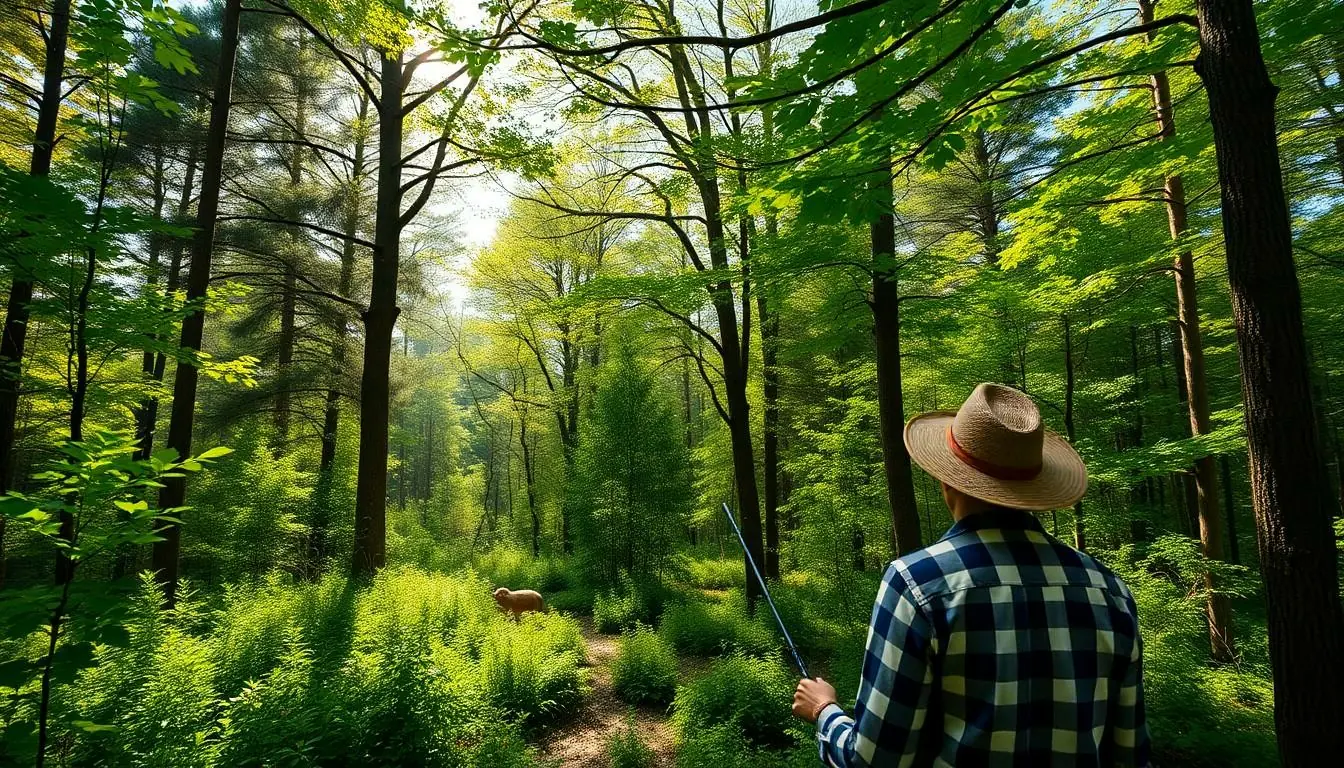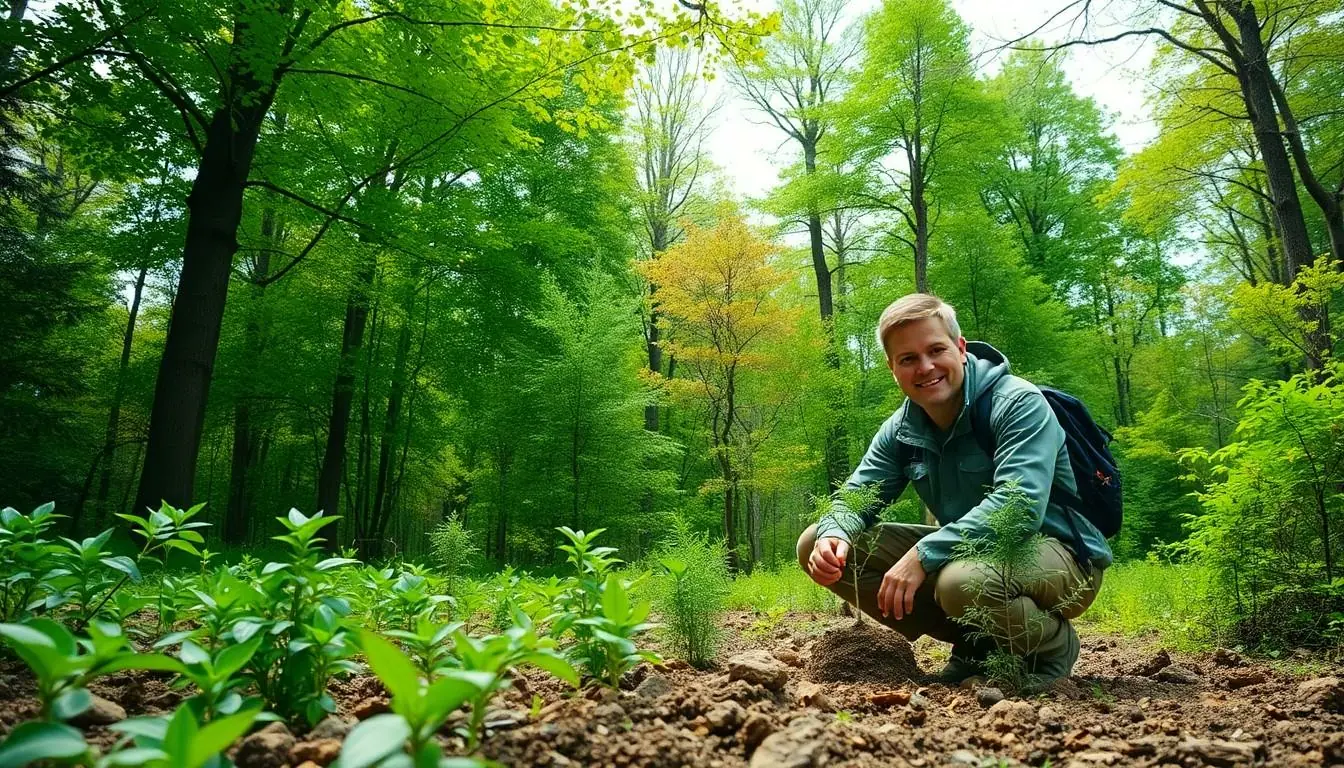Sustainable forestry is like the superhero of environmental practices, swooping in to save our forests while keeping the lumberjacks happy. But not all techniques in this green crusade wear capes. Some methods may seem flashy but lack the power to truly protect our precious woodlands. So, what’s the deal with those techniques that don’t quite make the cut?
In a world where trees need champions, it’s crucial to distinguish between the real MVPs and the wannabes. Understanding which techniques aren’t critical can help us focus our efforts and resources where they’ll do the most good. Buckle up as we dive into the quirky world of sustainable forestry and uncover the not-so-critical techniques that might just leave you scratching your head. Who knew saving trees could be this entertaining?
Table of Contents
ToggleOverview of Sustainable Forestry
Sustainable forestry encompasses practices that maintain the health and biodiversity of forest ecosystems while allowing for responsible timber harvesting. Critical techniques within this framework include selective logging, which minimizes ecological disruption by targeting specific trees. Another important method involves reforestation, where new trees are planted to replace those harvested, ensuring continuous forest cover.
In addition, land management practices, such as controlled burns, promote forest health by reducing underbrush, thus preventing larger wildfires. Integrating community involvement is essential, as local stakeholders can offer valuable insights and share stewardship responsibilities. Certification systems, like the Forest Stewardship Council, ensure that lumber products meet sustainability standards, allowing consumers to make informed choices.
However, not all techniques contribute effectively to sustainability. Practices that seem beneficial, such as monoculture planting, often lead to decreased biodiversity and increased vulnerability to pests and diseases. Misunderstanding these methods could result in inadequate conservation efforts.
Companies and land managers must evaluate the long-term impact of their forestry practices. Sustainable forestry emphasizes a balance between economic needs and ecological integrity. This approach protects vital ecosystems while supporting local economies, ultimately fostering a harmonious relationship between nature and industry.
Key Techniques for Sustainable Forestry

Sustainable forestry employs various techniques essential for maintaining ecological balance while supporting lumber production. These methods emphasize responsible management and conservation.
Selection of Tree Species
Selecting appropriate tree species is vital for sustaining forest ecosystems. Native species often thrive better in local environments, promoting biodiversity and resilience. Diverse forests support a wide range of wildlife and enhance soil health. Planting a mix of species counters diseases and pests, reducing reliance on chemical interventions. Informed choices about tree species result in robust forest health over time.
Sustainable Harvesting Methods
Sustainable harvesting methods ensure timber extraction doesn’t compromise forest integrity. Techniques like selective logging allow trees to be harvested individually, minimizing impacts on the surrounding ecosystem. Thinning practices can improve growth rates by reducing competition for resources among trees. Adopting reduced-impact logging methods further decreases soil disturbance and preserves habitats. Employing these practices ensures forests remain productive and healthy while meeting economic needs.
Forest Management Practices
Effective forest management practices are crucial for safeguarding forest resources. Controlled burns rejuvenate ecosystems by reducing underbrush and lowering wildfire risks. Responsible land-use planning integrates community input, enhancing stakeholder engagement and stewardship. Setting aside protected areas preserves critical habitats while allowing sustainable use elsewhere. Monitoring forest conditions continuously helps adapt management strategies, ensuring long-term viability and resilience against environmental changes.
Techniques That Are Considered Non-Critical
Certain techniques lack significant impact on sustainable forestry practices. Evaluating effectiveness is crucial in determining their contributions to forest conservation.
Understanding the Criteria
Evaluation criteria focus on ecological health and biodiversity impacts. Practices that disrupt these elements or promote harmful effects rank as non-critical. Techniques contributing marginally to sustainability do not support the overarching goals of long-term forest preservation. It is important to recognize that not every appealing method offers tangible benefits to ecosystems. These criteria help stakeholders identify practices that either enhance or hinder sustainable forestry efforts.
Examples of Non-Critical Techniques
Several techniques often viewed as beneficial may not enhance sustainability. Monoculture planting reduces biodiversity and can lead to increased pest susceptibility. Clear-cutting, while efficient, often causes severe ecological disruption and habitat loss. Excessive use of chemical fertilizers poses risks by contaminating soil and water sources. Invasive species introduction may initially seem advantageous for rapid growth, yet it threatens native species and ecosystem balance. Evaluating these examples underscores the importance of prioritizing truly effective forestry practices.
Importance of Identifying Non-Critical Techniques
Identifying non-critical techniques in sustainable forestry helps streamline conservation efforts. Differentiating between effective and ineffective practices ensures resources focus on methods that significantly enhance forest health. Awareness of practices that appear useful but lack impact promotes better decision-making among stakeholders.
Focusing on substantial techniques like selective logging and reforestation showcases best practices in sustainable forestry. Monoculture planting clearly reduces biodiversity, which leads to a weakened ecosystem. Companies often overlook clear-cutting, not recognizing its severe ecological disruption caused to habitats and wildlife.
Understanding the excessive use of chemical fertilizers highlights another concern. These inputs may lead to contamination of soil and water sources, posing risks to local ecosystems. Awareness about invasive species introduces another layer of complexity, as these organisms can threaten native flora and fauna.
Moreover, continuous monitoring of forest health is crucial. This proactive approach allows for quick adjustments to management strategies, ensuring ecological integrity remains intact. Stakeholders should prioritize techniques that not only meet immediate economic goals but also respect long-term environmental requirements.
Evaluating forestry practices with an eye towards sustainability encourages a balanced relationship between economic interests and ecological responsibility. Businesses and land managers benefit from analyzing the long-term implications of their methods, ultimately promoting healthy ecosystems alongside community prosperity. Recognizing the importance of identifying non-critical techniques strengthens commitment to forest conservation.
Understanding which techniques truly contribute to sustainable forestry is essential for effective conservation efforts. While some practices may seem beneficial at first glance, they can undermine biodiversity and forest health. By focusing on proven methods like selective logging and reforestation, stakeholders can make informed decisions that prioritize ecological integrity.
Identifying non-critical techniques allows for a more efficient allocation of resources, ensuring that efforts are directed toward practices that genuinely enhance sustainability. This approach not only supports forest ecosystems but also strengthens the economic viability of the lumber industry. Ultimately, fostering a balanced relationship between environmental stewardship and industry needs is key to achieving lasting sustainability in forestry.



